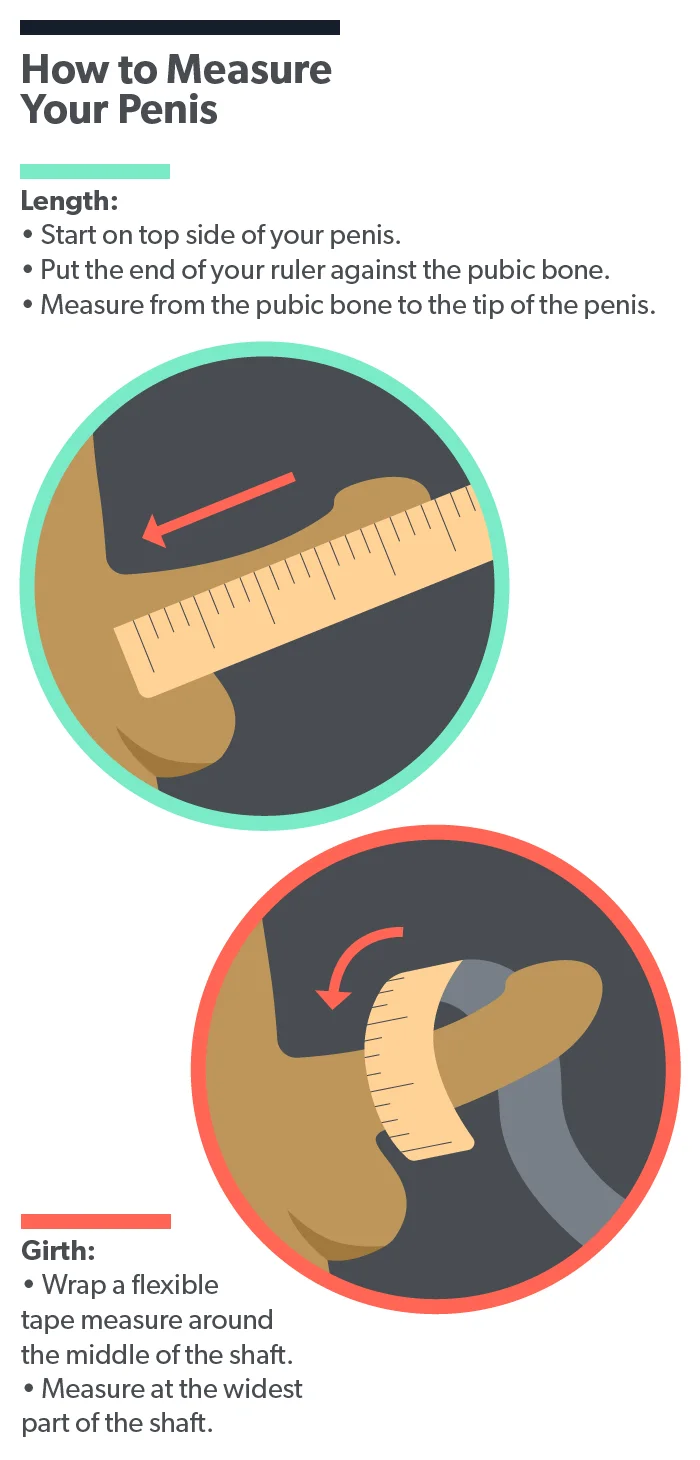Here's what we'll cover
Some guys can get… creative when it comes to measuring the size of their penis. It’s tempting to cheat and add an extra inch, especially if you have a touch of penis anxiety surrounding sex. But apparently, there is a right way to measure your penis, and odds are, you’re probably not measuring your penis in the most accurate way.
Keep reading to find out what science says about how to properly measure your penis length and girth.
How to properly measure your penis
The proper way to measure the length of your penis is from the top side rather than the bottom side. That’s because measuring the top of the penis has a clear stopping point—the pubic bone—which makes it a more reliable measurement than the bottom of your penis.
When you measure the underside of the penis, you can skew results by measuring into the balls area. Side note: it doesn't make much difference if you are circumcised or uncircumcised. The foreskin doesn't add length to the penis when erect.
What is the best measuring device to use?
When you measure your penis size, a soft measuring tape is better than a hard ruler for multiple reasons. First, many men have a curved penis, and only a measuring tape can be accurately placed along the curve of your penis. A curved penis might appear shorter with a rigid measurement device.
Secondly, if you want to measure the girth of your penis—aka how thick it is—a measuring tape, or any other type of flexible tape measure is needed anyways.
How to measure penis length
Measuring your penis size correctly is simple, but that doesn’t mean everyone knows how to do it. Here’s how to correctly measure the length of your penis:
Start on the top side of your penis (the side of the penis facing up towards you when you look down).
Put the end of your measuring tape at the base of the penis, right up against the pubic bone (where the penis meets the body). Be sure to push past any excess fat or pubic hair so the ruler is right up against the bone.
Measure in a straight line from the pubic bone to the tip of the penis.
Ta-da! That’s your actual penis length. According to a 2015 study, the average flaccid length is 3.6 inches, while the average length of an erect penis is 5.17 inches.

How to measure girth
Penis girth—the circumference of the penis, or how thick it is—gets a lot of attention in the world of men's sexual health. Here’s how to measure it properly:
Wrap a flexible tape measure or a piece of string (which you can measure against a ruler after) around the middle of the shaft of the penis.
Any part of the shaft will do, so feel free to find the widest point.
The average flaccid penis girth is 3.67 inches. The average erect penis girth is 4.59 inches.
Should you measure your penis erect or flaccid?
Either way is fine, so long as you know what you’re measuring and what to expect. There is obviously some difference between erect and flaccid measurements. It can be a little easier to measure erect and typically gives more satisfying numbers, but it’s also important to keep your results in perspective.
Regardless of how you measure, your penis is probably—statistically speaking—big enough. And, whether you have an above-average or small penis, you can have and provide sexual satisfaction and self-confidence. Speak with your urologist or another healthcare provider for medical advice if you're concerned about your penis or experiencing conditions like erectile dysfunction or premature ejaculation.
DISCLAIMER
If you have any medical questions or concerns, please talk to your healthcare provider. The articles on Health Guide are underpinned by peer-reviewed research and information drawn from medical societies and governmental agencies. However, they are not a substitute for professional medical advice, diagnosis, or treatment.
References
Veale, D., Miles, S., Bramley, S., et al. (2015). Am I normal? A systematic review and construction of nomograms for flaccid and erect penis length and circumference in up to 15 521 men. BJU International, 115 (6), 978–986. doi: 10.1111/bju.13010. Retrieved from https://pubmed.ncbi.nlm.nih.gov/25487360/












